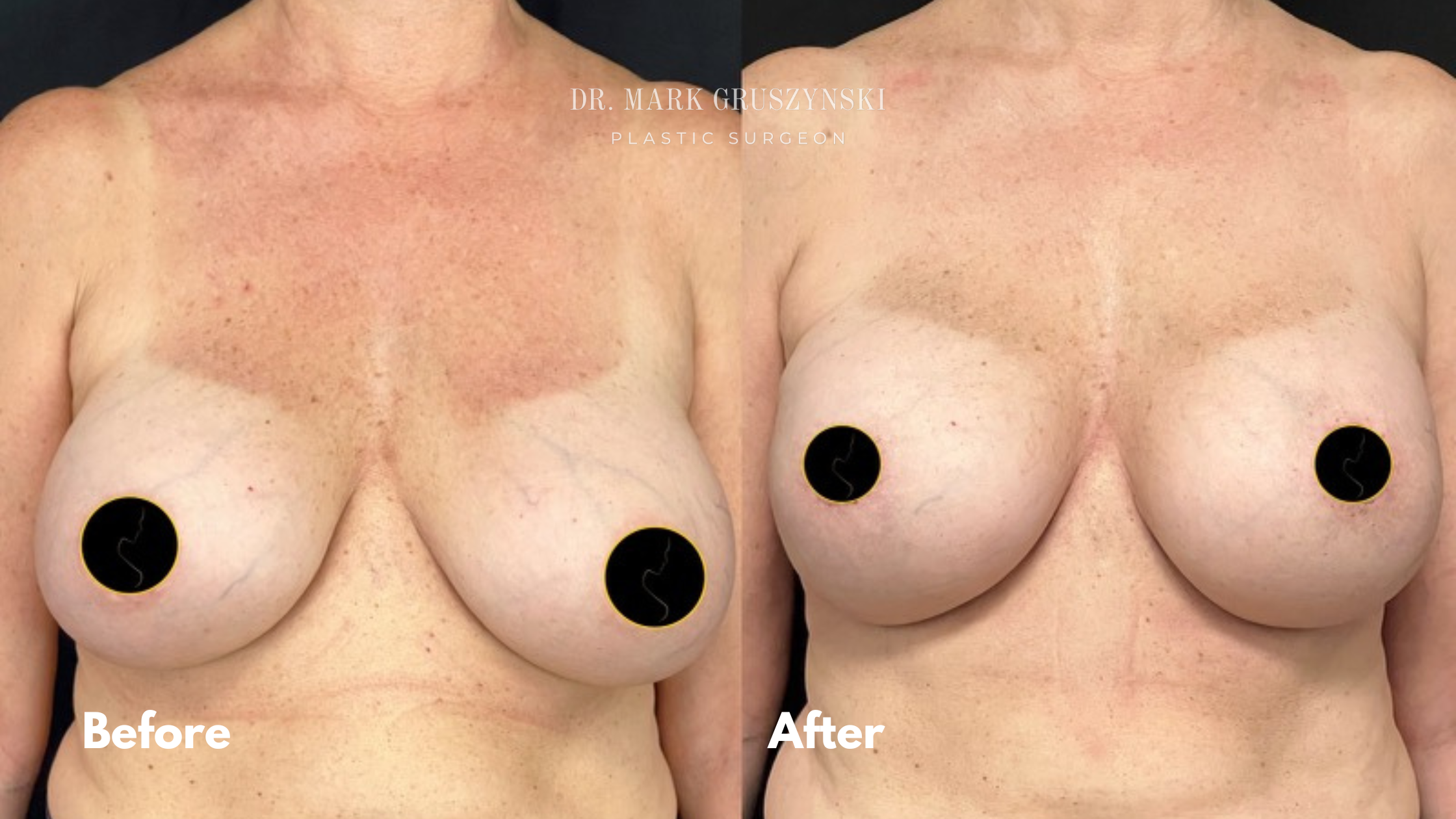I’ve previously discussed the important decisions that need to be made in primary (first time) breast augmentation, most notably picking a surgeon who will give the best opportunity for a safe, long-lasting result. Even in the best of hands, breast implants are a limited life span medical device, meaning anyone electing to undergo breast augmentation will need a revision surgery in the future. This owes to both 1) Patient Factors (with age, breast glandular tissue decreases while fatty tissue increases, and tissues stretch and descend, mostly noticeable with lower nipple position which is also known as Ptosis) AND 2) Implant Factors (the pressure from an implant causes stretching and thinning of skin and breast tissue, or implant rupture). These changes often make revision breast augmentation more challenging than primary breast augmentation.
Common reasons for patients seeking revision breast augmentation include Capsular Contracture (tightening of the scar tissue around the implant leading to deformity and even pain), Implant Malposition (migration of the implant, either too low, too far laterally towards the armpits, or both), and Ptosis (lowering of the nipple position). While these issues can be deferred significantly through careful planning and meticulous technique in the primary breast augmentation operation, they are largely inevitable. We consider a 10-12 year lifespan of an implant to be a success.
It is important that a Plastic Surgeon addresses all of the concerns that prompt a patient to seek revision breast augmentation surgery. In the event of Capsular Contracture, the dense scar tissue must be carefully removed. For patients that have had significant thinning of tissues from subglandular placement or from too large of an implant, changing the position of the implant to a submuscular placement can help create a more natural appearance of the upper pole of the breast while protecting the remaining skin and breast tissue. Finally, in the event of Ptosis (a low nipple position), a Mastopexy (breast lift) must be performed to restore a youthful, sensual breast position. Mastopexy can be performed with a scar limited to the areola, with a “Lollipop Scar”, or a Wise pattern scar (“anchor shape”) depending on the amount of excess skin and the patient’s goals for implant size. I discuss all of these factors individually and in great detail with my patients seeking revision breast surgery to ensure that our expectations align and that the final result will be satisfying for many years to follow.




